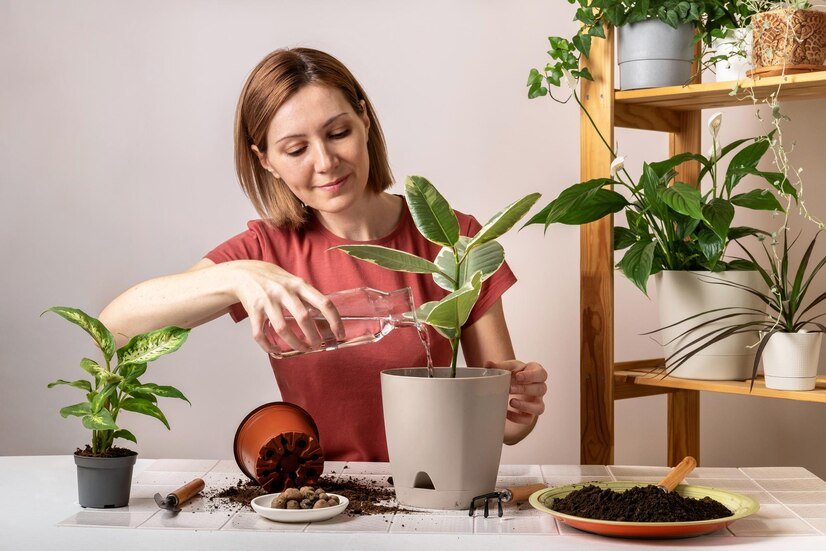Propagating indoor plants is a rewarding way to expand your collection or share plants with others. Here are the general steps for propagating common indoor plants:
1. Choose the Right Method
- Stem Cuttings: Most popular method, suitable for plants like pothos, philodendron, and succulents.
- Leaf Cuttings: Used for plants like snake plants and succulents.
- Division: Ideal for plants with clumping growth habits, such as spider plants and peace lilies.
- Air Layering: A more advanced method for larger plants like rubber trees.
- Water Propagation: Suitable for many plants, particularly vine plants like pothos and philodendron.
2. Gather Necessary Tools
- Sharp, clean scissors or a knife
- Small pots or containers
- Potting mix or water (depending on the method)
- Rooting hormone (optional)
- Clear plastic bags (for creating humidity domes)
3. Stem Cuttings
- Step 1: Choose a healthy stem with at least 3-4 leaves.
- Step 2: Cut just below a node (the point where leaves meet the stem).
- Step 3: Remove the lower leaves to expose the nodes.
- Step 4: Place the cutting in water or moist potting mix.
- Step 5: Keep the cutting in a warm, bright spot but out of direct sunlight.
- Step 6: Change the water regularly if using water propagation, and watch for root development.
4. Leaf Cuttings
- Step 1: Choose a healthy leaf.
- Step 2: Cut the leaf at the base (for succulents) or midsection (for snake plants).
- Step 3: Allow the cut end to dry and callous over for a day or two.
- Step 4: Place the cut end in moist potting mix.
- Step 5: Keep the soil slightly damp and place in indirect light.
5. Division
- Step 1: Gently remove the plant from its pot.
- Step 2: Separate the root ball into sections, ensuring each section has roots attached.
- Step 3: Repot each section in its own pot with fresh potting mix.
- Step 4: Water thoroughly and keep in a warm, bright spot.
6. Air Layering
- Step 1: Choose a healthy stem and make a small cut or remove a small section of bark.
- Step 2: Apply rooting hormone to the wound.
- Step 3: Wrap the wounded area with moist sphagnum moss.
- Step 4: Cover with plastic wrap to retain moisture.
- Step 5: Once roots have formed, cut below the new root system and pot up the new plant.
7. Care After Propagation
- Watering: Keep the soil or water consistently moist but not waterlogged.
- Light: Provide bright, indirect light.
- Humidity: Some cuttings benefit from increased humidity; use a plastic bag to create a mini greenhouse if needed.
- Patience: Roots may take several weeks to develop. Be patient and monitor the cutting’s progress.
8. Common Issues
- Rotting: Avoid overwatering and ensure proper airflow.
- Mold: If using a plastic bag for humidity, occasionally open it to allow air exchange.
- No Root Growth: Ensure the cutting has at least one node and is kept in the proper environment.
Each plant species may have specific needs or quirks, so it’s essential to research the specific plant you are propagating.

Post Views: 334


